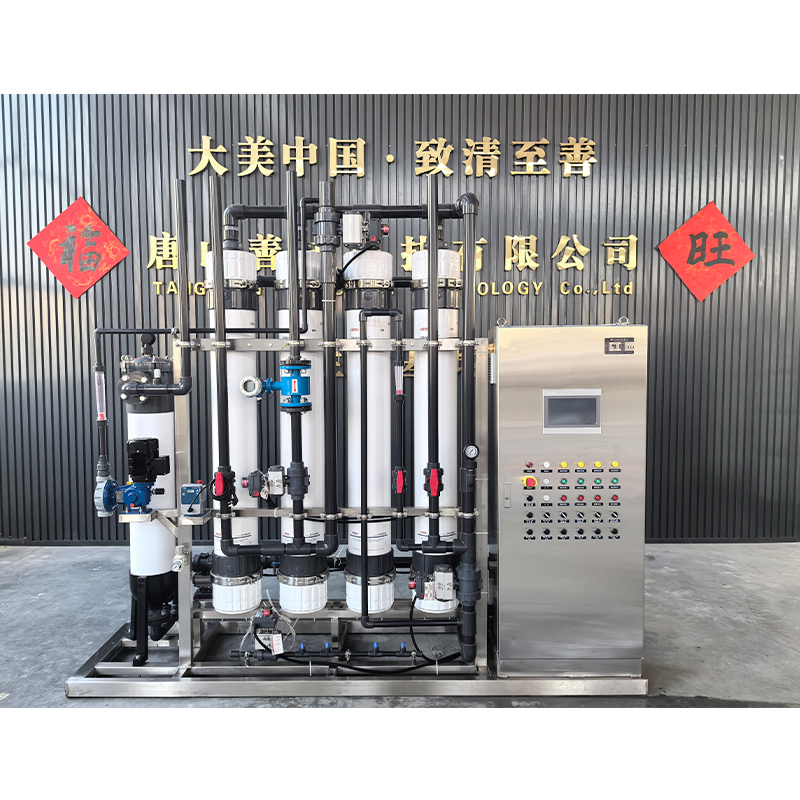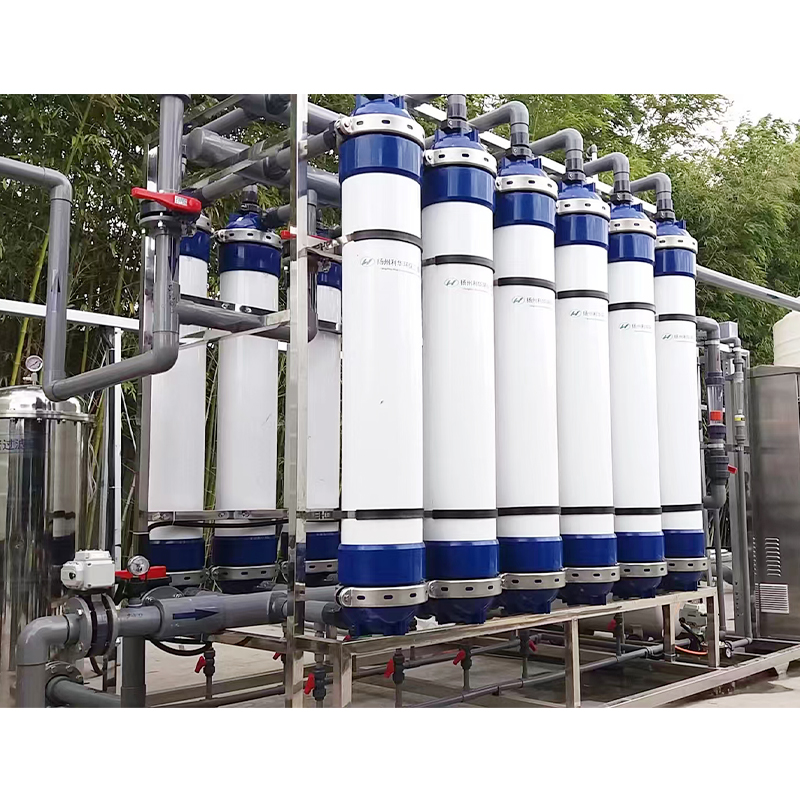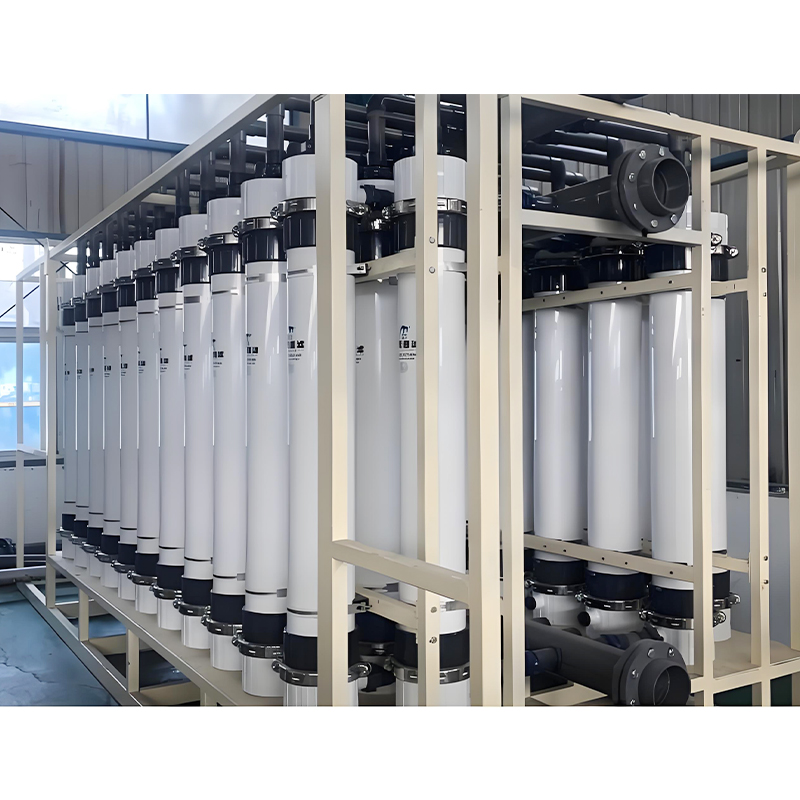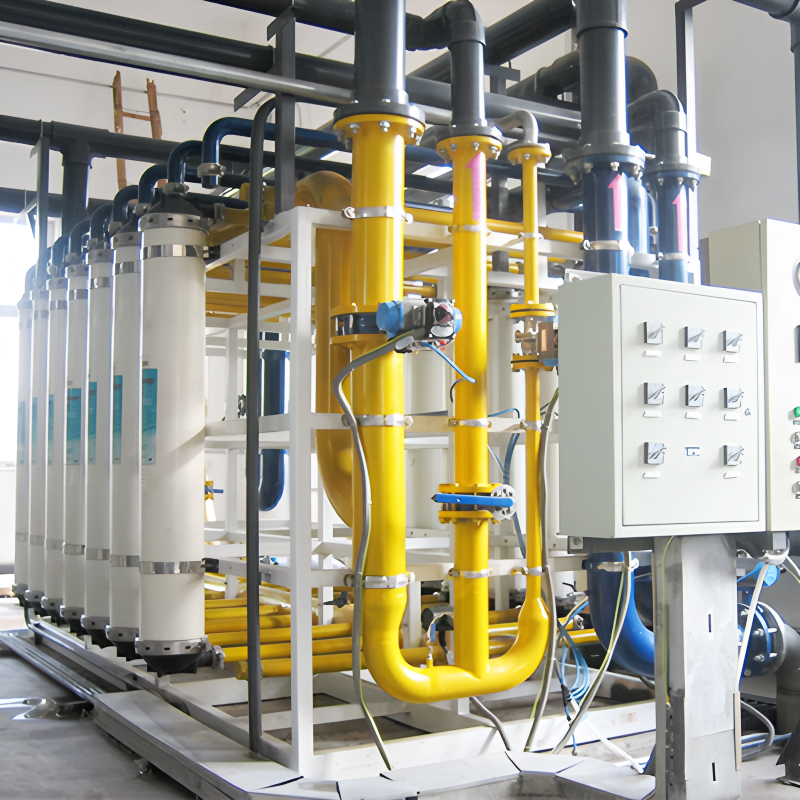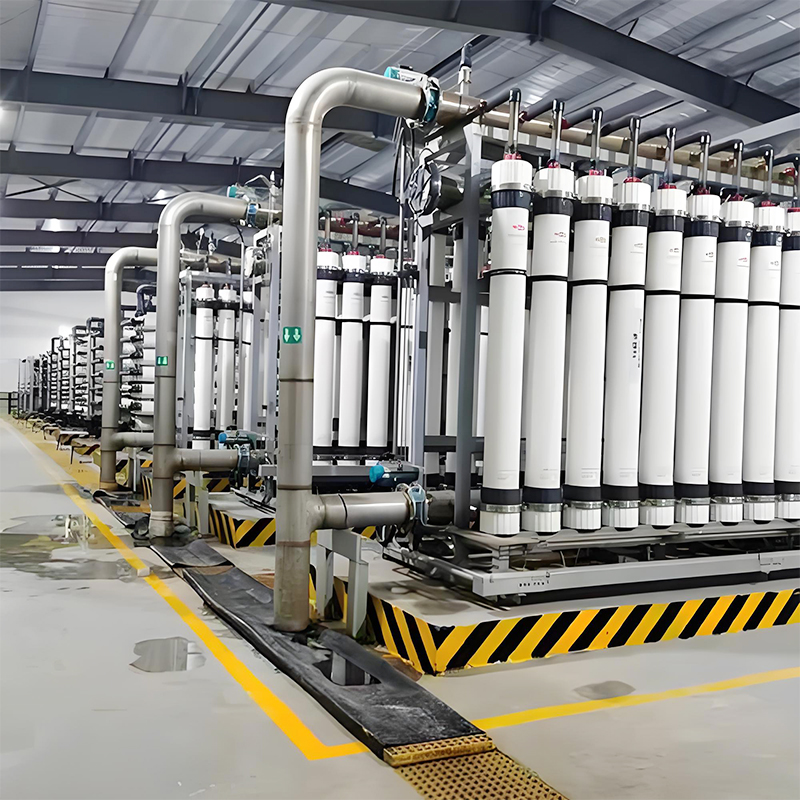SCKJ-CL-
The processing capacity is 0.5 tons/hour to 1000 cubic meters/hour, which can be customized according to user needs. The production cycle is to be determined after negotiation.
Ultrafiltration (UF) is a pressure-driven membrane separation process that can separate particulate matter from fluids and dissolved components. The typical pore size of ultrafiltration membranes is between 0.01-0.1 microns, and has a high filtration rate for bacteria and most viruses, colloids, sludge, etc. The smaller the nominal pore size of the membrane, the higher the filtration rate. The materials commonly used for ultrafiltration membranes are high molecular polymers, and their basic properties are mainly hydrophobic, but they can be hydrophilic modified.
Ultrafiltration usually operates in a constant flow mode, and the transmembrane pressure difference (TMP) will gradually increase with the operating time. At this time, the contamination layer can be removed by regular backwashing or air scrubbing, and the use of bactericides or other cleaning agents can effectively control the reproduction of microorganisms and remove pollutants.

